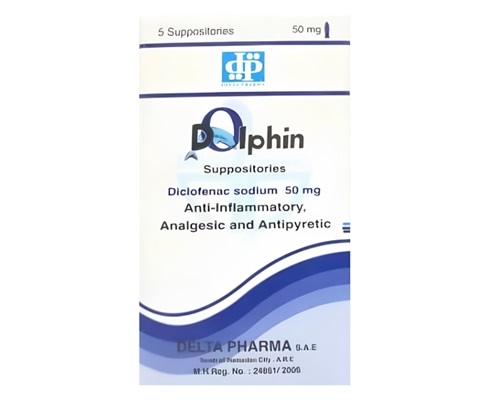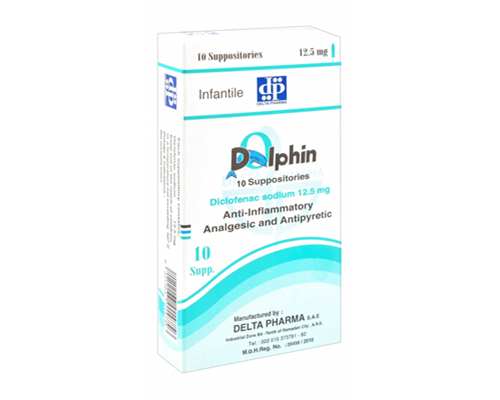Description
Trade name:
Indomethacin
Compound:
Each suppository contains:
Indomethacin 100 mg
Excipients: HAC 50, polyoxyl stearate 40.
Properties:
NSAID. It has anti-inflammatory, analgesic, antipyretic and antiplatelet effects. Suppresses the activity of proinflammatory factors, reduces platelet aggregation. By inhibiting COX 1 and 2, it disrupts the metabolism of arachidonic acid, reduces the amount of prostaglandins (Pg) both in the inflammation site and in healthy tissues, suppresses the exudative and proliferative phases of inflammation. It causes a weakening or disappearance of rheumatic and non-rheumatic pain syndrome (including joint pain at rest and during movement, reduction of morning stiffness and swelling of the joints, promotes an increase in the range of motion; in inflammatory processes occurring after operations and injuries, it quickly relieves both spontaneous pain and pain during movement, reduces inflammatory edema at the wound site).
Indications:
Inflammatory and degenerative diseases of the musculoskeletal system: rheumatoid arthritis, psoriatic arthritis, juvenile chronic arthritis, ankylosing spondylitis;
rheumatic lesions of soft tissues;
gouty arthritis;
as part of complex therapy for infectious and inflammatory diseases of the ENT organs, adnexitis, prostatitis, cystitis, neuritis, algomenorrhea, headache and toothache (as part of combination therapy).
Method of administration and dosage:
Rectally (inserted into the rectum). It is recommended to empty the bowels before using the suppository.
Adults and children over 14 years of age – 100 mg once a day.
It is recommended to use the minimum effective dose of indomethacin in the shortest possible courses.
Contraindications:
Peptic ulcer of the stomach and duodenum;
ulcerative colitis;
bleeding (intracranial, gastrointestinal);
congenital heart defects (coarctation of the aorta, pulmonary atresia, tetralogy of Fallot);
heart failure;
arterial hypertension;
color vision impairment;
optic nerve disease;
liver cirrhosis with portal hypertension;
liver failure;
bronchial asthma;
hemophilia, hypocoagulation, other blood diseases;
chronic renal failure;
hearing loss;
pathology of the vestibular apparatus;
deficiency of glucose-6-phosphate dehydrogenase;
proctitis, hemorrhoids;
pregnancy;
breastfeeding period;
childhood and adolescence up to 18 years of age;
hypersensitivity to indomethacin and other NSAIDs, including “aspirin” asthma.
Precautions:
With caution: in case of hyperbilirubinemia, thrombocytopenia, epilepsy, parkinsonism, depression, and in elderly patients.
During treatment, it is necessary to monitor the peripheral blood picture and the functional state of the liver and kidneys.
Impact on the ability to drive vehicles and operate machinery:
During the treatment period, it is necessary to refrain from driving vehicles and engaging in potentially dangerous activities that require increased concentration and speed of psychomotor reactions.
Drug interactions:
Concomitant use with paracetamol increases the risk of developing nephrotoxic effects.
Ethanol, colchicine, and glucocorticoids increase the risk of developing gastrointestinal complications accompanied by bleeding.
Increases the concentration of lithium, methotrexate and digoxin in the blood.
Cyclosporine and gold preparations increase the nephrotoxicity of indomethacin.
Cefamandole, cefoperazone, valproic acid increase the risk of hypoprothrombinemia and the risk of bleeding.
Indomethacin reduces the elimination of penicillins.
Side effects:
From the digestive system: NSAID-gastropathy, abdominal pain, nausea, vomiting, heartburn, anorexia, diarrhea, liver dysfunction (increased blood bilirubin, liver transaminases). With prolonged use in high doses – ulceration of the gastrointestinal mucosa.
From the nervous system: headache, dizziness, insomnia, agitation, irritability, fatigue, drowsiness, depression, peripheral neuropathy.
From the sensory organs: hearing loss, tinnitus, taste disturbance, diplopia, blurred vision, corneal opacity, conjunctivitis.
From the cardiovascular system: heart failure, tachyarrhythmia, increased blood pressure.
From the urinary system: renal dysfunction, proteinuria, hematuria, interstitial nephritis, nephrotic syndrome, papillary necrosis.
From the hemostasis system: bleeding (gastrointestinal, gingival, uterine, hemorrhoidal), thrombocytopenia.
Allergic reactions: skin rash, itching, urticaria, Quincke’s edema, bronchospasm; rarely – Lyell’s syndrome, erythema nodosum, anaphylactic shock.
From the hematopoietic system: agranulocytosis, leukopenia, aplastic anemia, autoimmune hemolytic anemia.
From the side of metabolism: hyperglycemia, glucosuria.
From the side of water-electrolyte balance: hyperkalemia.
Others: aseptic meningitis (more common in patients with autoimmune diseases), increased sweating, edema syndrome.
Local reactions: burning, itching, heaviness in the anorectal area, exacerbation of hemorrhoids.
Storage method:
Store at temperatures not exceeding 30 degrees.









